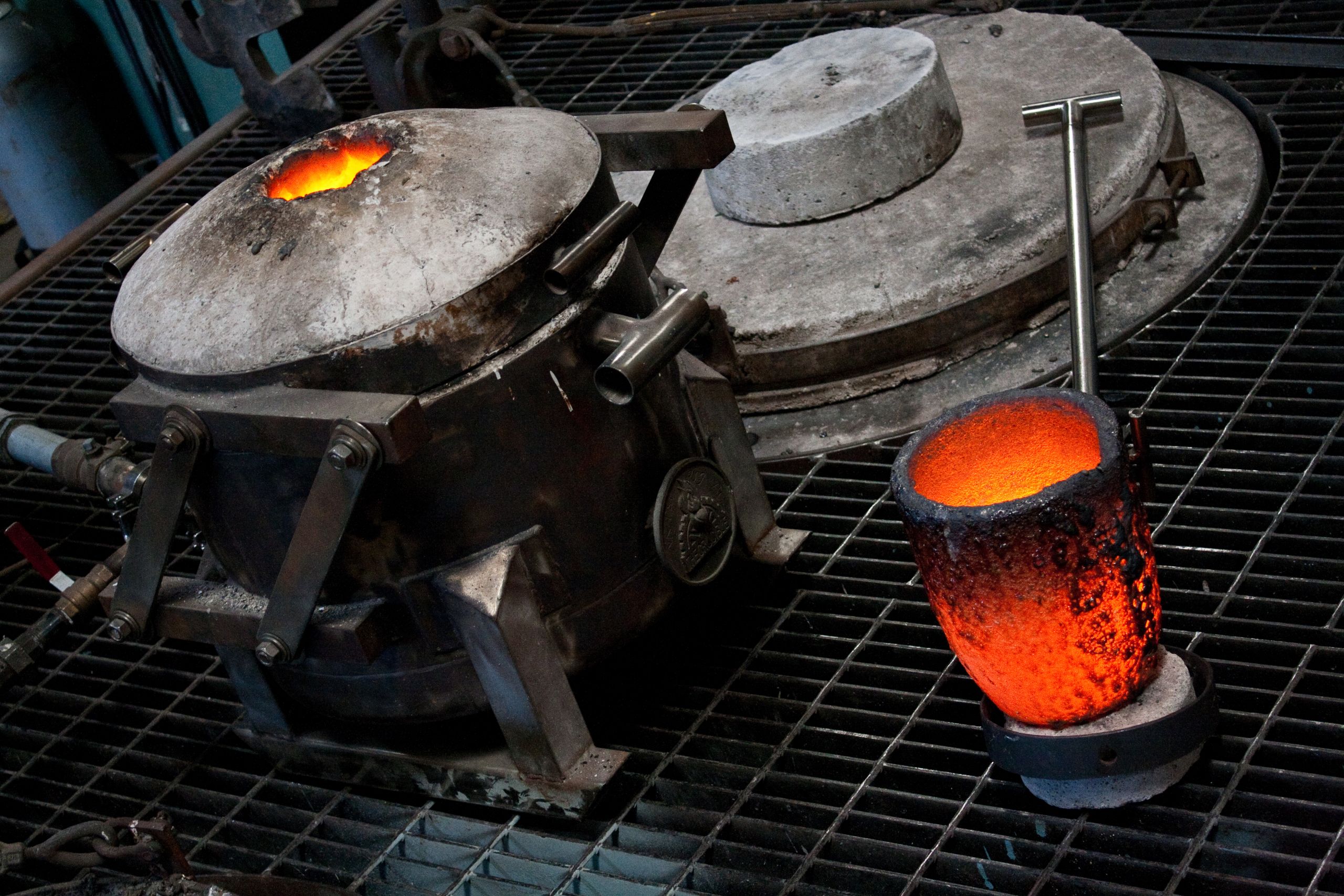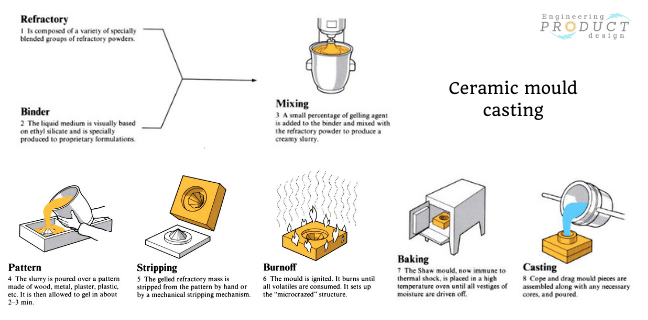A Deep Dive Into the Different Sorts Of Metal Casting and Their Uses
Metal Casting encompasses numerous techniques, each customized for specific applications and requirements. From the economical sand spreading method to the precision of financial investment casting, each procedure has special benefits. Die casting sticks out in high-volume production circumstances, while shed foam casting introduces innovative design possibilities. In addition, irreversible mold and mildew casting is identified for its sturdiness. Understanding these approaches opens a window right into their useful uses and effects in various markets. What lies below the surface of these casting techniques?
Sand Casting: A Economical and versatile Method
Although various casting approaches exist, sand spreading continues to be one of one of the most cost-efficient and functional strategies in the metalworking industry. This technique employs a blend of sand and a binding representative to create mold and mildews, permitting for the production of components in diverse sizes and forms. Sand spreading is especially advantageous for tiny to tool manufacturing runs, as it calls for very little in advance financial investment in tooling contrasted to other casting methods.
The procedure starts with the development of a mold and mildew, where molten steel is put in to create the wanted things once cooled. Its flexibility enables using various metals, consisting of iron, aluminum, and steel. Furthermore, sand casting can suit intricate geometries, making it ideal for a series of applications, from automotive elements to detailed artistic pieces. On the whole, sand casting's effectiveness and versatility solidify its relevance in the production landscape.
Investment Spreading: Precision and Detail for Complex Forms
Financial investment spreading sticks out as a method renowned for its capacity to create highly detailed and intricate parts. This process entails creating a wax pattern that is covered with a ceramic shell, which is then heated to eliminate the wax and set the covering. The outcome is a precise mold and mildew that can catch intricate geometric shapes with remarkable precision.
This casting method is specifically valuable for creating get rid of thin wall surfaces, great functions, and limited tolerances, making it perfect for markets such as aerospace, vehicle, and medical tools. Financial investment casting suits a variety of metals, including stainless steel, light weight aluminum, and titanium, making it possible for makers to meet details material demands.
Furthermore, the process minimizes machining demands post-casting, which can boost efficiency and reduce manufacturing prices. Generally, financial investment spreading is a favored choice for applications where accuracy and information are extremely important.
Pass Away Spreading: High-Volume Production With Excellent Surface Finish

Die spreading is an extremely reliable production procedure that succeeds in creating big quantities of metal components with outstanding surface finishes. This approach involves compeling molten steel right into a mold dental caries under high stress, permitting for rapid manufacturing cycles and uniformity in the completed items. Typically made use of materials consist of magnesium, light weight aluminum, and zinc, which provide excellent mechanical residential properties and corrosion resistance.
Pass away spreading is specifically useful for markets such as vehicle, electronic devices, and durable goods, where accuracy and quality are vital. The procedure enables elaborate designs, lowering the need for extra machining and ending up processes. In addition, the smooth surface areas developed through die spreading typically call for marginal post-processing, leading to lower overall manufacturing costs. As a high-volume production method, pass try this out away spreading is perfect for makers looking for effectiveness without jeopardizing on quality, making it a favored selection for numerous applications across various industries.
Lost Foam Casting: Innovative Approach for Intricate Styles
Lost foam casting changes the production of intricate metal parts by utilizing a distinct process that removes the need for typical mold and mildews. Rather than conventional mold-making, this technique utilizes a foam pattern that is covered with a refractory material. As soon as the pattern is set, molten metal is poured directly into the mold, causing the foam to leave and evaporate behind an exact cavity for the metal to load. This innovative strategy allows for detailed styles and thorough functions that may be testing to achieve with various other casting techniques.
Additionally, shed foam spreading can decrease waste and energy consumption, making it an eco-friendly alternative. Industries such as automobile and aerospace advantage significantly from this technique, as it sustains the development of light-weight components with intricate geometries. Overall, shed foam casting stands apart for its capability to deliver high-quality, personalized steel components effectively.
Long-term Mold And Mildew Casting: Resilience and Uniformity in Steel Parts
Long-term mold casting is an extremely reliable method for producing consistent and resilient metal components, leveraging reusable mold and mildews that are generally made from metals such as iron or steel. This spreading procedure involves putting molten steel into these mold and mildews, which are preheated to enhance product high quality and minimize issues. The use of multiple-use mold and mildews not only lessens waste however additionally enables higher manufacturing rates, making it financially useful for producers.
The resulting parts exhibit exceptional dimensional precision and surface area coating, making them ideal for applications in automobile, aerospace, and industrial equipment. Furthermore, permanent mold casting can fit a variety of alloys, even more broadening its flexibility. The durability of the cast parts is improved due to the controlled cooling prices that advertise better grain structures. In general, this casting strategy stands apart for its capacity to create premium metal parts that fulfill strenuous performance standards, making sure reliability in requiring atmospheres.
Regularly Asked Inquiries
What Products Can Be Made Use Of in Various Steel Casting Processes?

Numerous products can be used in Metal Casting procedures, including aluminum, iron, bronze, and zinc. Each material supplies distinct properties, influencing the spreading method's performance, stamina, and suitability for various applications in manufacturing.
How Do Casting Approaches Influence the Mechanical Properties of Metals?
Casting methods considerably influence the mechanical buildings of steels, influencing factors like ductility, hardness, and stamina. Variations in cooling down rates and mold and mildew products can lead to various microstructures, ultimately influencing the efficiency of the end product.
What Are the Environmental Impacts of Metal Casting Procedures?
Metal Casting procedures can cause Related Site air and water air pollution, source exhaustion, and significant power intake (Aluminum Castings). In addition, the generation of waste materials and greenhouse gas exhausts greatly affects the environment and adds to climate adjustment
How Do You Pick the Right Spreading Method for a Task?
Selecting the appropriate casting technique includes evaluating task demands, product homes, intricacy, and why not try here production quantity. Variables like price effectiveness, finish quality, and lead time additionally play important roles in establishing the most suitable strategy.
What Security Preventative Measures Should Be Taken During Metal Casting Procedures?
Throughout Metal Casting operations, safety preventative measures include using protective equipment, making sure correct air flow, carrying out equipment inspections, maintaining a clean workspace, and having emergency procedures in position to handle prospective threats like burns or toxic fumes.
From the cost-efficient sand casting method to the accuracy of financial investment spreading, each procedure has one-of-a-kind benefits. Pass away casting is a highly effective manufacturing process that succeeds in generating huge volumes of metal parts with exceptional surface area coatings. Lost foam casting changes the production of complicated metal parts by using a distinct procedure that gets rid of the demand for standard mold and mildews (Metal Castings). Permanent mold and mildew spreading is a very reliable technique for creating constant and durable metal components, leveraging recyclable molds that are normally made from steels such as iron or steel. Numerous materials can be utilized in Metal Casting procedures, consisting of aluminum, zinc, iron, and bronze